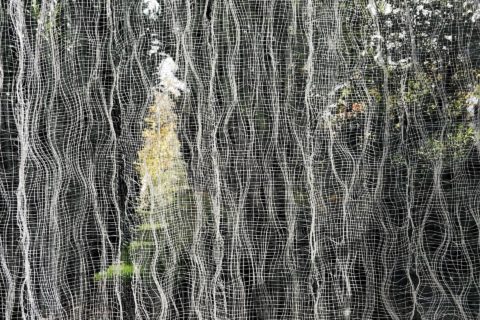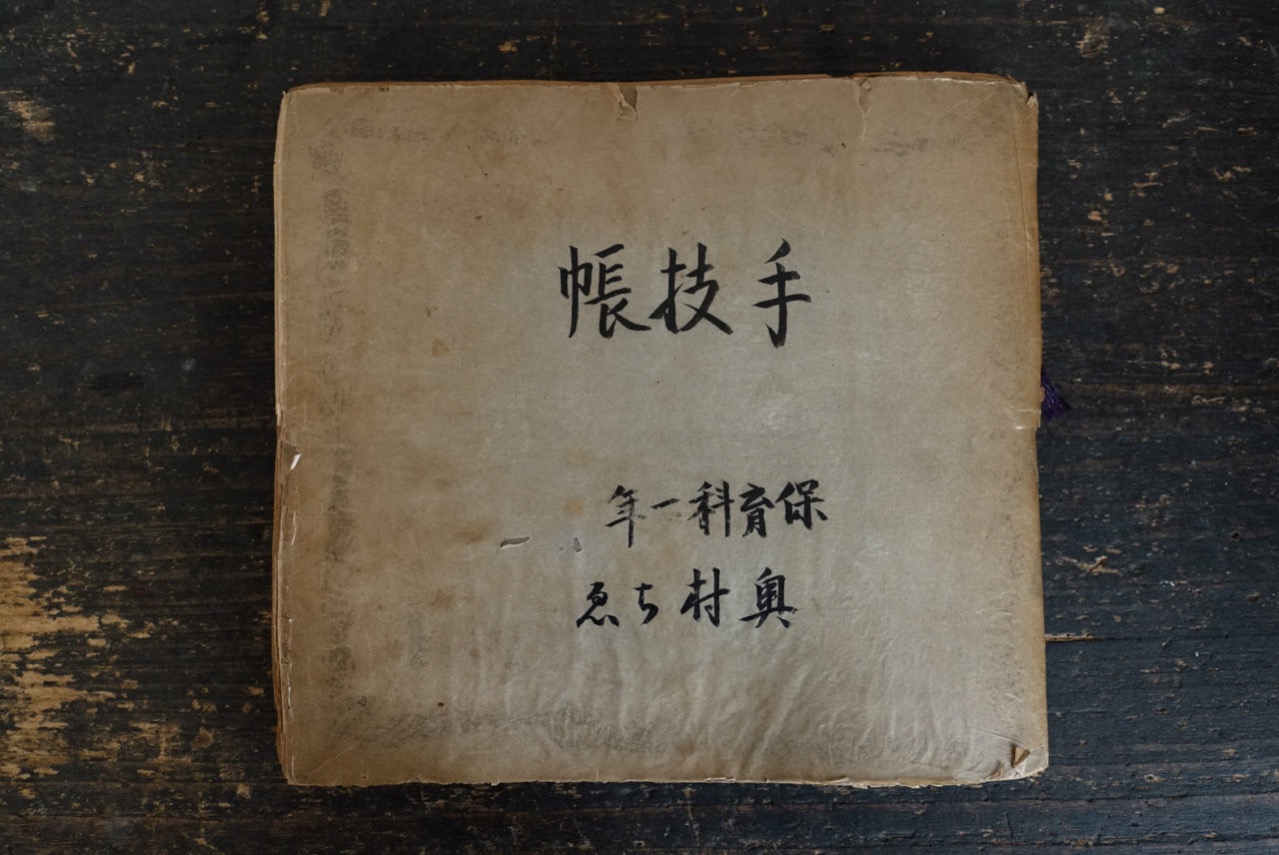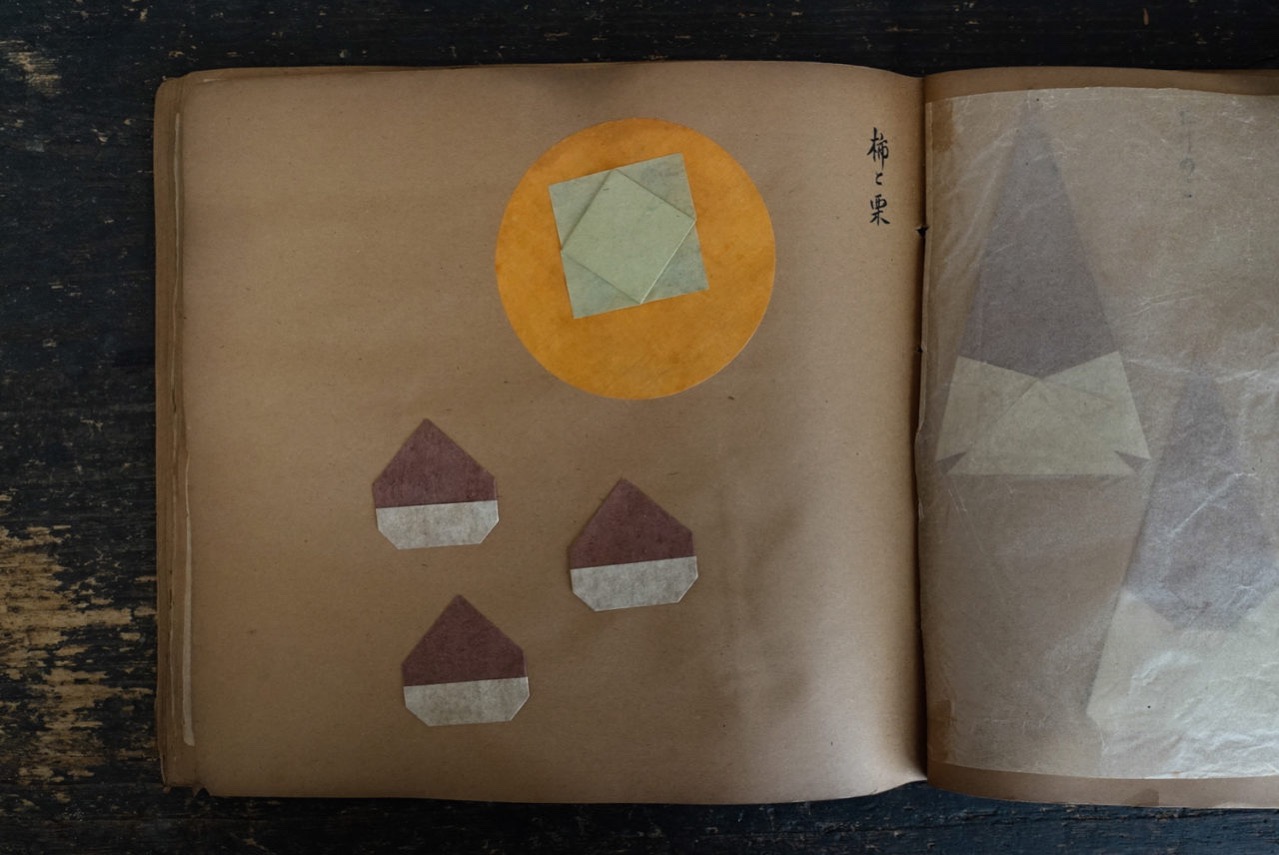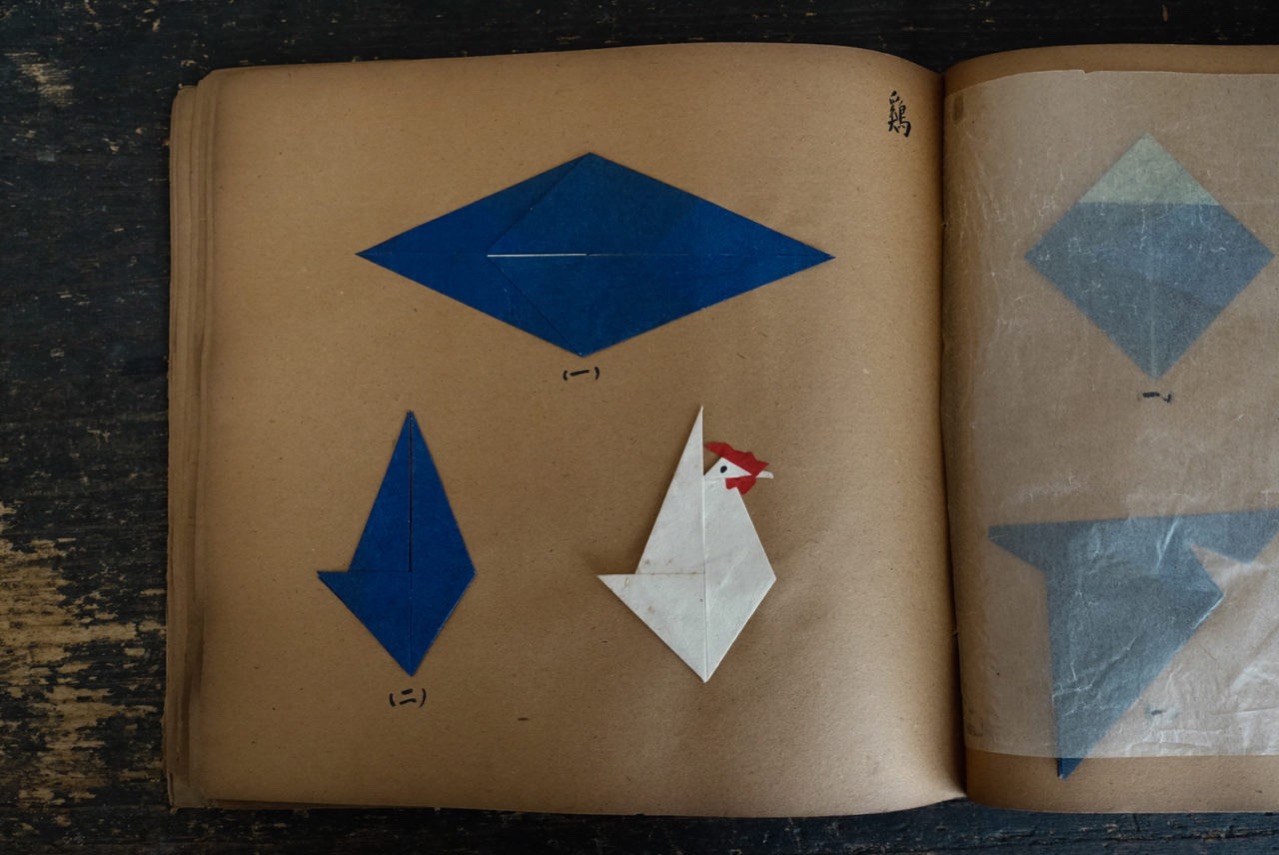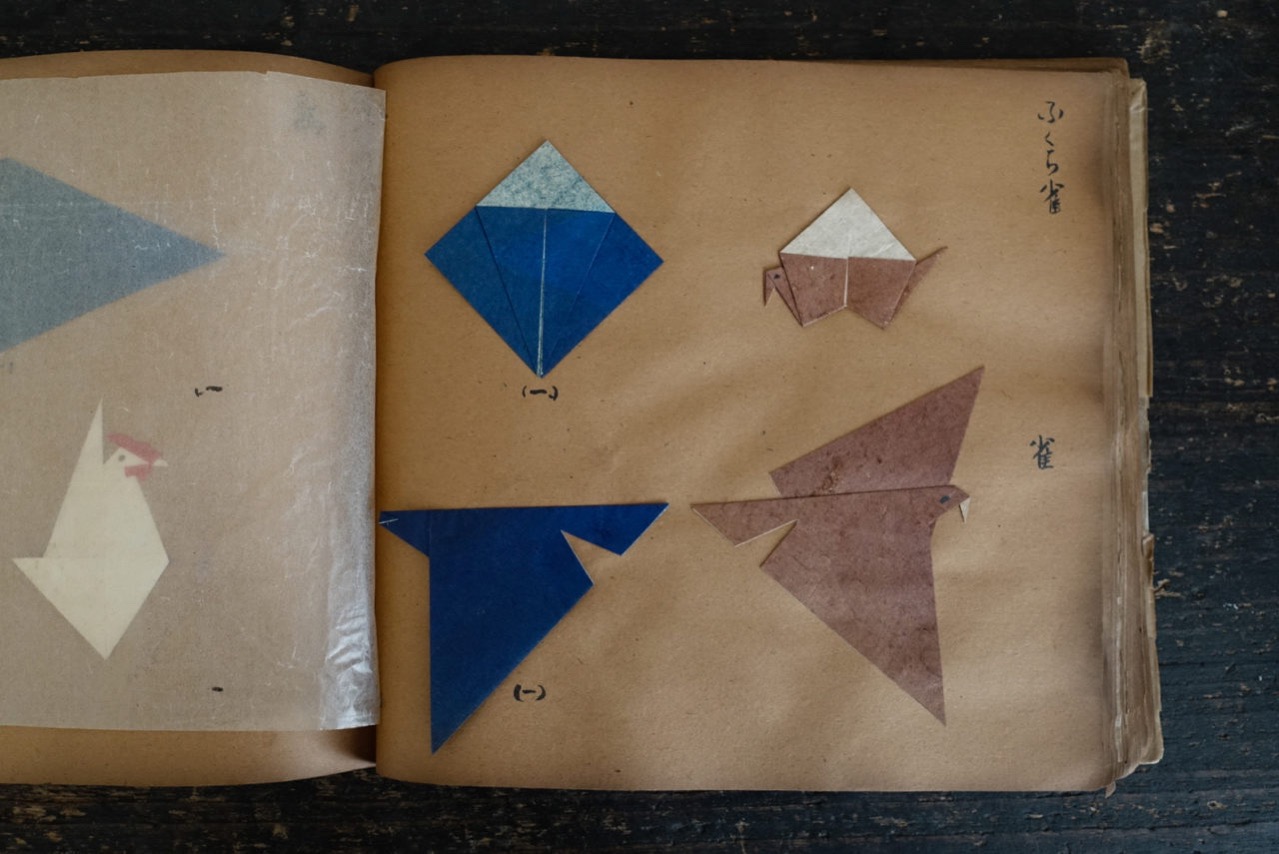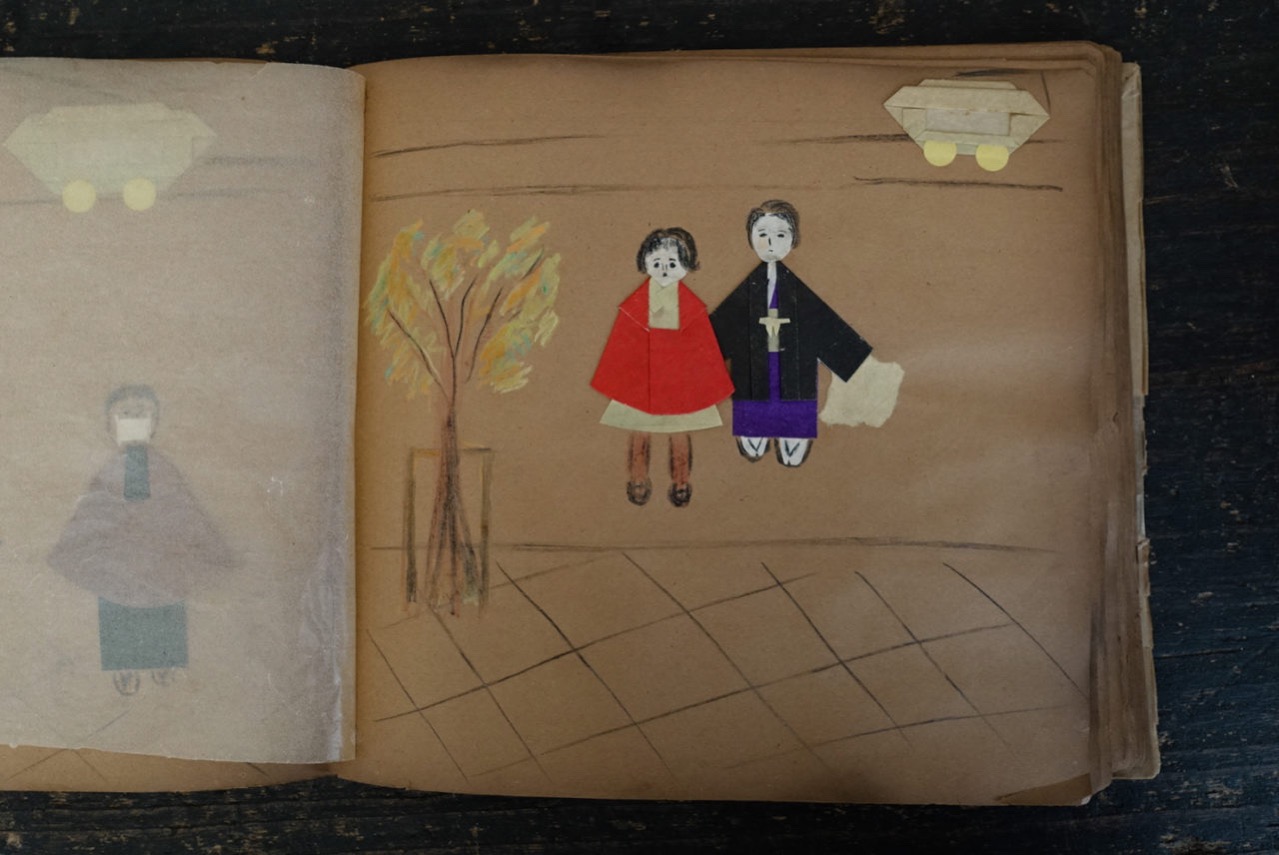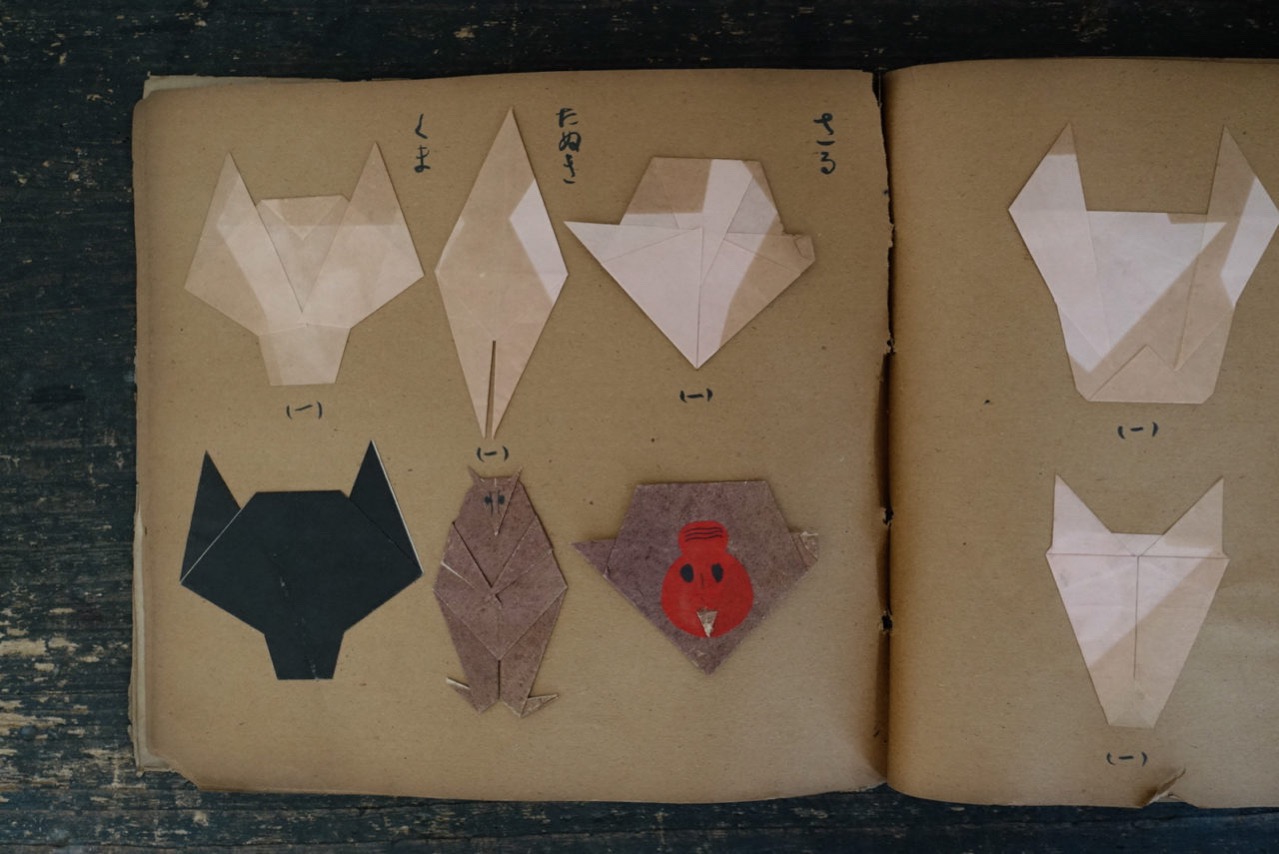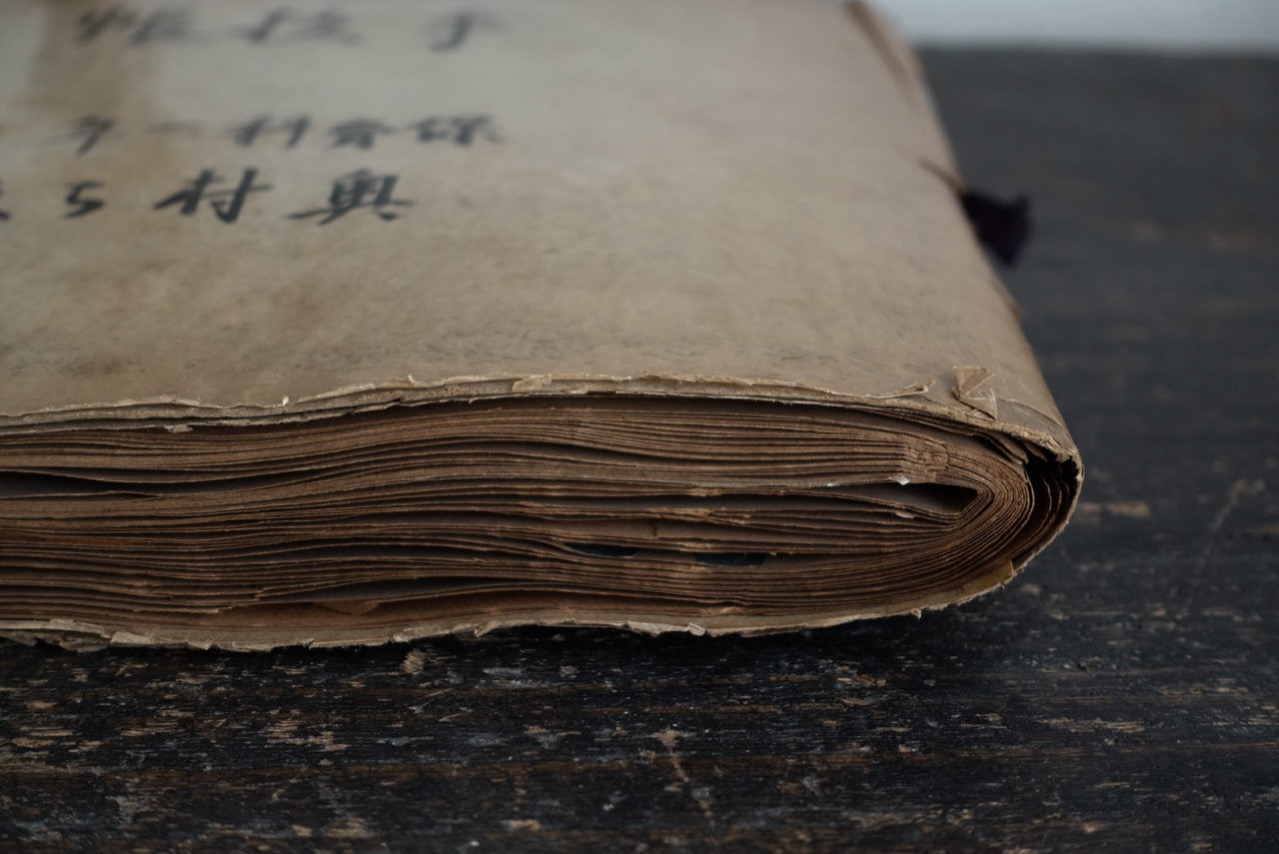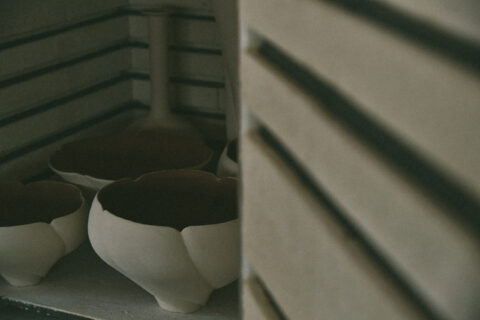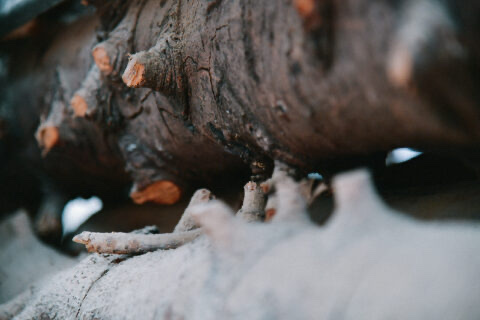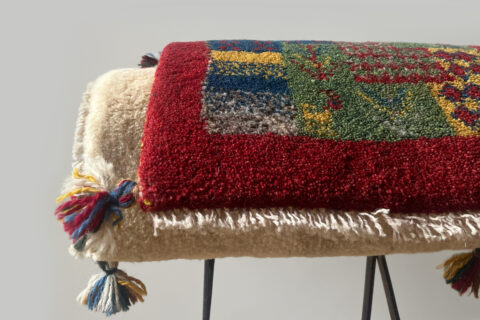偏平的房屋、立體的鶴與百合花、吹氣時會發脹的紙氣球、放在水裡會漂流的紙船⋯⋯折紙或許是我們最早接觸的工藝。折紙能夠訓練兒童手指的活動能力、對形狀的想像等等。不過,我想最重要的還是,當兒童依著指示圖,嘗試解讀、模妨卻又不免經歷失敗,過程裡不住的煩惱,同時不住跨過煩惱,最終完成一件小小的工藝品時,為創造而努力所帶來的苦與樂,便稍稍地埋在他們幼小的心靈裡。
日本於明治時代開設了首間的幼稚園,在眾多訓練兒童手藝與心智的遊戲裡,便包含了折紙,而折紙的樣本冊,便是當時的幼稚園老師不可或缺的課堂道具了。這本樣本冊是於古物店找到的,年份已無從考究了,也不知道內裡的折紙作品,是否全來自造樣本冊的奧村老師,還是包含了部分學生的作品。
年份久遠,拼湊樣本帳的紙張已脆弱不堪,稍一用力便會隨時撕裂,內裡的折紙色彩有些淡化了,卻依然艷麗。奧村老師的折紙樣本冊,最有趣之處是,她並沒有將每個步驟仔細標明,而是將其中幾個關鍵性的標示出來而已。簡單如一條折線的角度,影響了成品看來像蘿蔔或是甘荀,像狗還是狐狸。
想來,折紙的成品其實都是或多或少的幾何圖形組合,而我們居然能在稜角分別的幾何之中,看出了大千世界的萬事萬物來,人類的想像力真是奇妙。
The small house, the crane, the tulip, the blow-up paper balloon, and the floating paper boat… Origami is perhaps the first handicraft that we get to know in early childhood. Paper folding is beneficial for children to develop finger movement, it can also spark their imaginations regarding different shapes. Among all the advantages of origami, I believe the most important aspect is to let children read and interpret the instructions, so as to follow the steps to recreate the paper art. Failed attempts are inevitable during the children’s trials, therefore, they also need to learn to overcome these frustrations. Along with the successful final work of origami is the bitterness and joy that comes from repeated attempts; these feelings would be slowly imprinted in their little young mind.
The first kindergarten in Japan was founded during the Meiji Era. Back in the days, origami is one of the activities for developing children’s motor skills and mind. Origami instruction book was naturally an indispensable kindergarten teaching material. I came across this origami instruction book in an antique shop. The year of publication is unknown. I am even not sure if the origami introduced in this book are all from Okumura or a collaborative collection from both herself and her students.
As a book of a long history, its paper is already so crisp that can be easily torn. The colors of the illustration have faded, they are nevertheless marvelous. The most interesting thing about Okumura’s instruction books is how she avoided the minute details and included only the crucial notes. Things as simple as the angle of a fold can have a great effect on the outcome; a carrot can become a radish, a fox can look like a dog because of the slight difference in folding angle.
Origami is all about geometry. Human imagination is so magical that we can see all the fascinating objects and animals from mere geometry.
